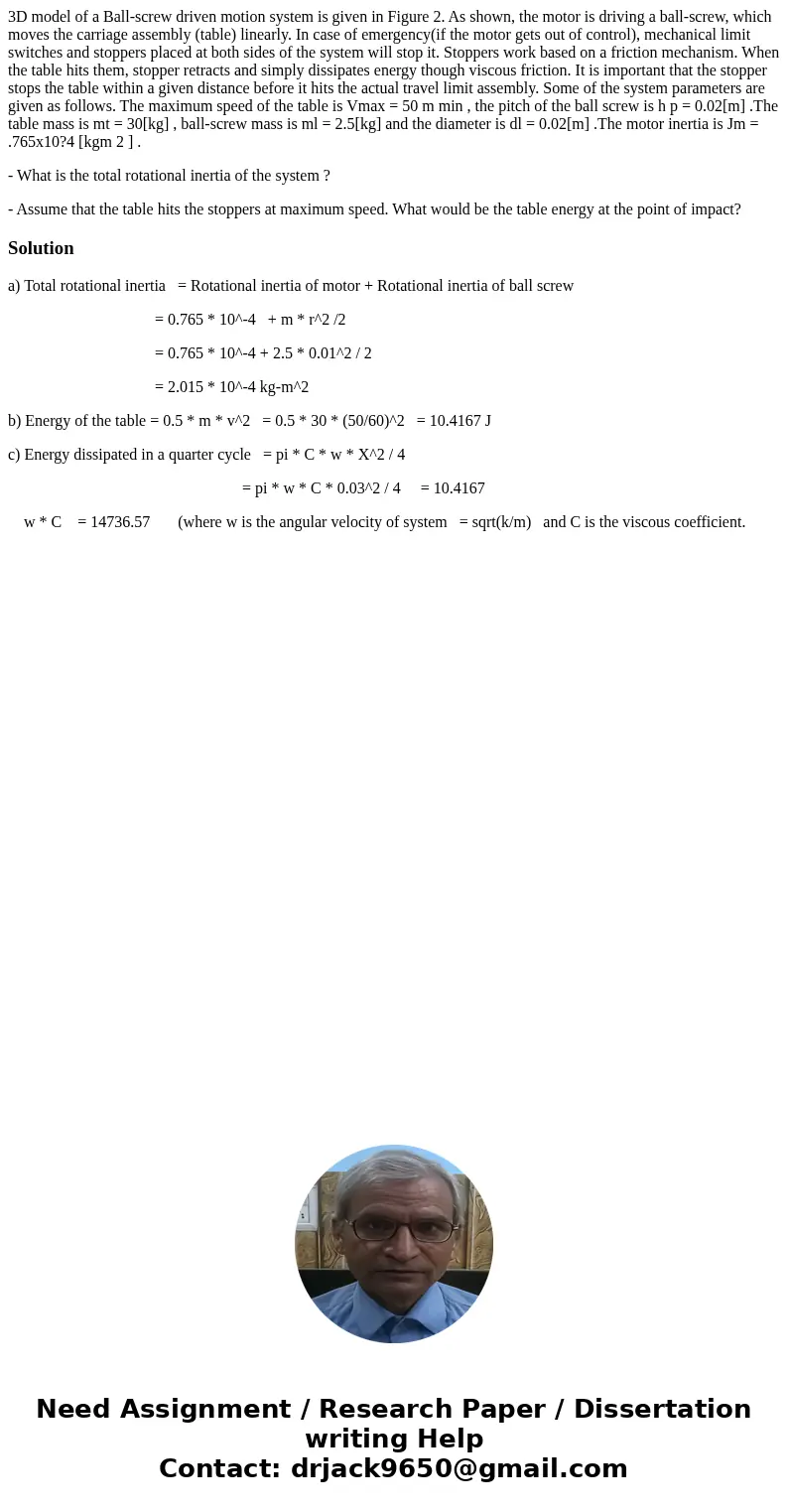3D model of a Ballscrew driven motion system is given in Fig
3D model of a Ball-screw driven motion system is given in Figure 2. As shown, the motor is driving a ball-screw, which moves the carriage assembly (table) linearly. In case of emergency(if the motor gets out of control), mechanical limit switches and stoppers placed at both sides of the system will stop it. Stoppers work based on a friction mechanism. When the table hits them, stopper retracts and simply dissipates energy though viscous friction. It is important that the stopper stops the table within a given distance before it hits the actual travel limit assembly. Some of the system parameters are given as follows. The maximum speed of the table is Vmax = 50 m min , the pitch of the ball screw is h p = 0.02[m] .The table mass is mt = 30[kg] , ball-screw mass is ml = 2.5[kg] and the diameter is dl = 0.02[m] .The motor inertia is Jm = .765x10?4 [kgm 2 ] .
- What is the total rotational inertia of the system ?
- Assume that the table hits the stoppers at maximum speed. What would be the table energy at the point of impact?
Solution
a) Total rotational inertia = Rotational inertia of motor + Rotational inertia of ball screw
= 0.765 * 10^-4 + m * r^2 /2
= 0.765 * 10^-4 + 2.5 * 0.01^2 / 2
= 2.015 * 10^-4 kg-m^2
b) Energy of the table = 0.5 * m * v^2 = 0.5 * 30 * (50/60)^2 = 10.4167 J
c) Energy dissipated in a quarter cycle = pi * C * w * X^2 / 4
= pi * w * C * 0.03^2 / 4 = 10.4167
w * C = 14736.57 (where w is the angular velocity of system = sqrt(k/m) and C is the viscous coefficient.

 Homework Sourse
Homework Sourse